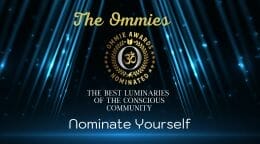Korean Shamanism
By Dwight Bonair
Korean shamanism, also known as Muism/Mugyo, “religion of the Mu” or sometimes as Sinism/Shingyo, “religion of the gods”, is the indigenous religious beliefs and practices of the Korean people. In contemporary South Korea, the most used term is Muism and a shaman is known as a mudang or Tangol. The role of the mudang, usually a woman, is to act as intermediary between a spirit entity, spirits or gods and human beings.
The central feature of a shaman’s initiation is her affliction with an illness known as a shinbyeong. This is also called the “spirit sickness” or “self-loss” and characterized by a loss of appetite, insomnia, visual and auditory hallucinations. A ritual called a naerim-gut cures this illness, which also serves to induct the new shaman.
Korean shamanism is distinguished by seeking to resolve human problems through a meeting of humanity and the spirits. This can be seen clearly in the various types of gut or service that are still widely practiced. Korean shamans are similar in many ways to those found in Siberia, Mongolia, and Manchuria.
Korean shamanism encourages a healthy defiance against official dogma, and is very open-minded. Through the centuries they have held onto a most syncretic belief system that borrows from Buddhism, Confucianism, Daoism, Christianity, ancient animism, and elsewhere, and that engenders a strong connection to nature and its energy. Even when Christian missionaries demonized mudang and Muist followers, they still incorporated some of the beliefs into their regular practice, since the significant of it was what was important. There is a picture of Confucius, Buddha and Jesus having a beard and a halo. Jesus is seen talking to Confucius and Buddha, representing unification.
The Mountain God (Sanshin) is a central figure in Korean Shamanism. He is the guardian of villages, providing security and peace. If the number one god is the heavenly god, the mountain god acts as the number one earthly god. Perhaps only because Korea itself is mostly mountainous, Korea’s mythical founder is thought to have become a San-shin upon retirement. All of Korea’s imported religious traditions acknowledge the importance of San-shin (even if only in opposition to it), and its people have always worshipped the San-shin before all other deities. Buddhism, Daoism, Shamanism, and Confucianism worshipped Korea’s mythical founder, Tangun as the mountain god.
Generals who fell in battle were later deified as gods in Korean Shamanism. An example is General Choi Young from the Koryo Dynasty, known for being well respected and not materialistic. He was killed by Yi Sung-Gae, who went on to create the Chosun Dynasty. Besides Choi Young, many other generals who were liked by the people became gods to shaman worshippers, such as General Im Kyung-Ub, General Oh, General Jang Kyeh-Hong, General Hong, General Cho, General Nam Yi, and General Kim from Kyungju.
Anyone, man or woman, who died an unmarried virgin can become an Infant God. For example Doe Yung Nim and San Ma Doe Yung are one the Infant Lord’s and Ginseng Collector Lord’s. Minors under the age of fifteen can hear the spirit of the Infant Lord. When the mudang is performing the ritual, the Infant God will possess the female shaman and through her deliver his message.
Those fearing contagious diseases would give such diseases prestigious titles such as a high-ranking woman, an honorable guest, or a great star with the belief that if the disease was given the title of guest, it would eventually leave their home.
In the Korean folk masked dance-drama, social structure is turned upside down to relieve the commoners pent-up feelings imposed upon them by the rapacious and overbearing ruling yangban gentry. The dramas are festive, lewd, obscene, vulgar slapstick comedy in which laughter triumphs over any real or unseen fear. The performances take place outdoors by the bonfires. They start at sundown and are performed throughout the night until dawn. They combine entertainment and social satire with shaman ritual exorcism and deity supplication. Masks depict the ruling elite with asymmetrical features symbolizing debauchery, and clergy with boils to symbolize un-cleanliness. There are also masks of mythical animals and personages who bestow blessings. Color symbolism is also employed in the masks, such as red to drive away evil spirits.
Shamanism is the oldest religious impulse of the Korean people before any foreign born religious/spiritual ideology, such as Confucianism, Daoism, and Buddhism, came to Korea. Even though its origin is shrouded in mystery it is believed to be linked to a Siberian prototype and to Ural-Altaic civilization. Shamanic practice survived throughout the five-thousand-year-old history of Korea and formed the conscious and the subconscious strata of the Korean psyche.
Unification of Old Religions
Merciful Buddha, gracious Confucius, and loving Christ; here these three great holy figures are combined (Maan Bup Ttong Il).
Click HERE to Connect with your Daily Horoscope!
OMTimes Magazine is one of the leading on-line content providers of positivity, wellness and personal empowerment. OMTimes Magazine - Co-Creating a More Conscious Reality







